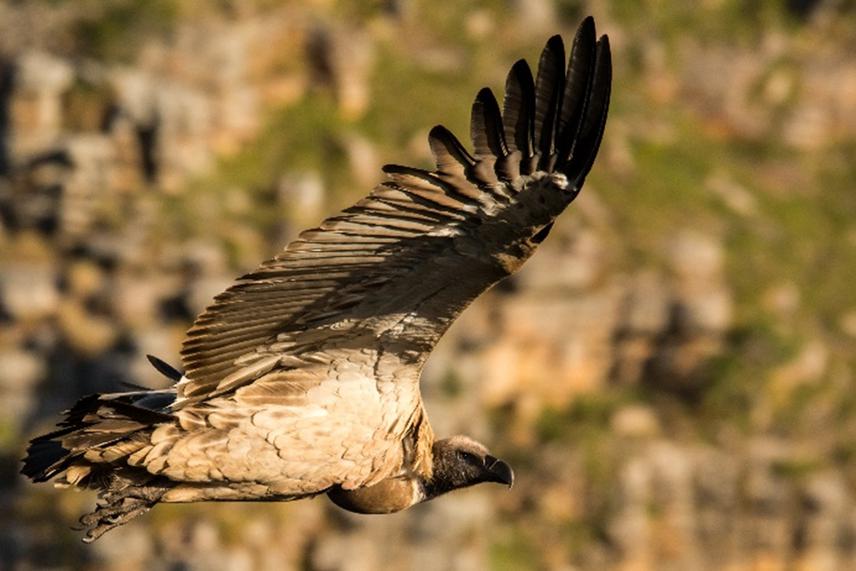Morgan Pfeiffer
Other projects
17 Nov 2014
Ranging Behavior of Cape Vultures (Gyps coprotheres): Implications for Wind Turbine Placement, Eastern Cape Province, South Africa
1 Mar 2018
Cape Vultures and Wind Energy: Unravelling the Effect of Threats and Possible Mitigating Measures
his research aims to determine the flight and roosting behaviour of juvenile Cape Vultures in the Eastern Cape Province of South Africa and the subsequent risk of wind turbines on juvenile Cape Vultures.

Cape vulture in flight.
The Cape Vulture is a bird endemic to southern African that was recently uplisted from “Vulnerable” to “Endangered”. Their population continues to decline due to threats such as collisions with and electrocution from power-lines, inadvertent poisoning, as well as the use of body parts in traditional medicine. In recent years, a new threat is emerging centred around wind energy development. Wind-farms can have detrimental effects on wildlife, mainly through the collision with wind turbine blades. Given that Cape Vultures are considered to be one of the most vulnerable to wind energy development in southern Africa, this research will assist in determining how Cape Vultures move in the landscape of the proposed wind energy development areas. The majority of the work conducted previously concentrated on adult Cape Vultures, however there is a concern that juveniles, due to their dispersal behaviour, are exposed to a multitude of threats at varying degrees.
To determine the ranging behaviour and habitat use of juvenile Cape Vultures, minimum convex polygons (MCPs) and auto-correlated kernel density estimates (AKDE) will be employed to determine the ranging behaviour of juvenile Cape Vultures. AKDE’s are used to identify areas of high vulture density.
To classify the flight behaviour of juvenile Cape Vultures, movement modes will be utilised. Previous studies found that Cape Vultures exhibit two major movement modes, encamped movement or exploratory movement. It is possible that roost sites can be identified by movement modes. Identifying the roost sites of juvenile Cape Vultures is key, given that these sites will be used intensively for a number of years until these birds can commence breeding at a colony. Following the digital location of these roost sites, a randomly selected sample will be ground-truthed by visiting and assessing each selected site. The visited roosts will be given a rating on a roosting site likelihood scale. A number of non-roost sites and historical roost sites will also be surveyed to determine the optimum characteristics for roost sites.
To determine the vulnerability of juvenile birds to wind energy development, a predictive model will be constructed that will examine first, the probability of juvenile vultures being present in areas of development, and second, the probability of juvenile vultures flying at risk height. This model will be compared to a risk assessment model constructed for adult Cape Vultures in the Eastern Cape Province.